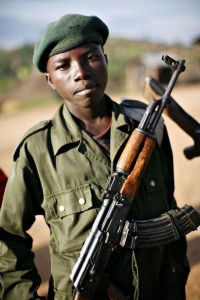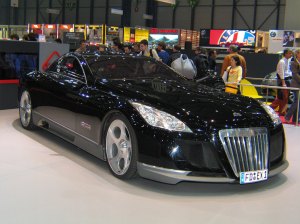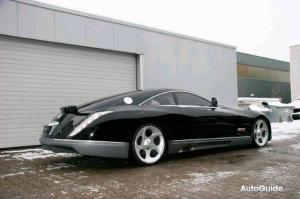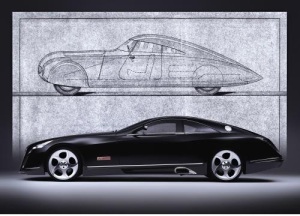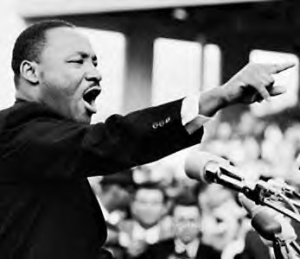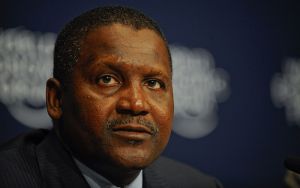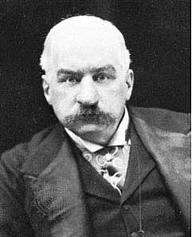Businesses, institutions and consumers in Lesotho are set to experience faster, reliable and significantly more affordable internet connectivity as Africa’s carriers’ carrier WIOCC brings additional broadband capacity into Lesotho.
Utilizing its extensive terrestrial and submarine fiber-optic cable network, WIOCC is delivering lower-cost internet connectivity to Lesotho, bringing benefits to consumers and businesses in the mountainous region.
Its arrival has already enabled a reduction in pricing of internet services by up to 67%. This is supporting the Lesotho Government’s 8th Millennium Goal to make the benefits of new technologies available to its citizens and organizations, and to help businesses compete in the international arena.
Educational institutions, such as the National University of Lesotho, are already benefitting – with Basotho students now able to access essential web-based resources that were previously unavailable. For consumers, mobile internet services are being made more affordable to a wider section of the population through significantly reduced charges.
“Until recently, internet access in Lesotho terminated in South Africa and was shaped and thus limited in international capacity. The connection provided by WIOCC terminates in Europe and provides Lesotho with faster and more affordable connectivity. This change will have a significant impact on the daily lives of the Basotho and Lesotho businesses,” explained WIOCC CEO, Chris Wood.
“Our extensive network reach also enables international enterprises, ISPs and carriers to terminate their services in Lesotho. This, together with the introduction of reduced wholesale pricing, will open up further opportunities in the region.”
Mpine Tente, general manager of Econet Telecom Lesotho (ETL) – the first operator in Lesotho to benefit from the WIOCC capacity commented, “The extra bandwidth made available by WIOCC has enabled us to make a huge reduction in our internet access costs. We are taking advantage of our improved international connectivity to deliver more reliable and affordable broadband services to our customers. Public and private businesses will benefit from reduced prices. All Basotho will benefit from cheaper access to the internet.”
Source: Bizcommunity.com
BY MATELA FRANCIS LECHESA
The Stockholm International Peace Research Institute recently that “…Africa is the most conflict ridden region of the World and the only region in which the number of armed conflicts is on the increase.” This view seems to be true enough without one giving much thought to it. I would venture so far as to say this would in fact be a universal view for people across the world were they to be quizzed on the matter. Granted that this view is close enough to reality, the question would be why is civil war incidence higher in Africa? And are there any economic underpinnings to this?
So I went into the world of Academia and did some digging for this week’s post and fortunately stumbled upon some useful findings. An econometric study done by World Bank economist Paul Collier found evidence to corroborate the view that civil war incidence is higher in our part of the world than in other regions and even more worryingly, the incidence of civil war has been increasing in Sub-Sahara Africa over the last 35 years while there has been a steady decline in other parts of the world.
I quite like the How Collier sets off his thesis with the question, is Africa systematically different from other regions? This is an important philosophical question I feel, as it addresses culture, heritage and temperament. For example I would go on further myself to ask is there a mysterious `Africa effect’ that makes people of our continent more violent than others?
The findings were not that surprising as Collier found out that the African continent the generally seemed to buck the global trend of a more peaceful world. It seems to be that non-African developing countries have gradually become less prone to civil conflict over the past thirty-five years. Contrary to other regions, Africa has indeed experienced a rising trend of conflict. However, this is fully accounted for by divergent trends in African and non-African economic conditions. Africa has experienced a rising trend of conflict because its economies have performed so poorly both absolutely and relative to other regions.
In the same study Collier designed an analytic econometric model that is in line with the rational choice tradition, with the ability to predict the probability of a civil war being initiated in a country during a five year period. The analytic model focuses on whether a rebel organization will be established.
The benefits of rebellion might accrue through a variety of sources. The rebellion might be motivated purely by `greed’ – the income that can be achieved either during the rebellion from quasi-criminal looting, and the benefits that ensue if the rebellion is victorious from control of the state revenues. Alternatively, it might be motivated purely by `grievance’ – the opposition to perceived or actual injustice.
The main costs of rebellion are the labor-force and equipment needed for a rebel army that can survive against the military threat posed by government forces. Because these costs must be met, even if the rebellion is motivated entirely by grievance it must generate revenue. Hence, the circumstances that determine financial viability are potentially important regardless of the motivation for rebellion.
The probability of rebellion increases as benefits rise relative to costs. Four important determinants of a rebellion as per the model are said to be finance, grievance, military viability and history. Potentially, finance is the only binding constraint on rebellion. Civil wars occur only when rebel groups are able to build large organizations, and such organizations require substantial financial resources both to meet their payrolls and to purchase armaments. Societies may differ considerably in the extent to which such large scale finance is available so that this is decisive.
An alternative is that finance is usually available when needed, whereas the supply of groups wishing to satisfy grievances through violent means is the binding constraint on rebellion. In this case we might expect that objective indicators of grievance, such as economic inequality, and ethnic or religious divisions, would fuel grievance, while the lack of democracy might channel these grievances into violence. Hence, these indicators would predict rebellion.
A further alternative is that rebellion is determined by its military viability. Rebels may need to meet a `survival constraint’ determined by the size of rebel forces relative to government forces and geographic factors such as whether the population is dispersed.
Rebellions are then more likely in societies in which government forces are weak and geographic conditions make it difficult for these forces to defend national territory. A final alternative is that conflict risk is determined by history. Once a conflict has occurred it creates a legacy of hatred and this hatred fuels further conflict. On this analysis, some societies are doomed to a cycle of repeated conflict.
Furthermore Collier’s model concluded that primary commodity exports have a strong effect on the risk of conflict, although the effect is non-monotonic. Until high levels of primary commodity dependence are reached, primary commodity exports powerfully increase the risk of conflict. This is what political commentators have often termed the ‘Africa’s natural mineral’s curse’.
So what is Collier saying when it’s all said and done? On average, over the period 1965-99, Africa had an incidence of conflict similar to that in other developing regions. However, its structure of risk was very different. Africa’s economic characteristics generated a high risk of conflict.
The model predicts correctly that non-African developing countries would have experienced a declining trend of conflict. The model accounts for this by their improved economic conditions. By contrast, the model correctly predicts the rising trend of African conflict. Again, this is fully accounted for by the deterioration in Africa’s economic performance. The analysis suggests that the rising trend of African conflict is not due to deep problems in its social structure, as suggested by other analysts, but rather is the contingent effect of economic circumstances. So there you go folks, our black people are no more inherently violent than any other race.
BY MATELA FRANCIS LECHESA
Deep in the recesses of every boy’s mind is the reveille of an amazing piece of machinery. Take away the humdrum that is everyday life, and imagine a life without limitation. They say a man is not what he currently has, but what he chases, what drives him. What drives you dear reader?
Personally I am driven by a lot of things, but when it comes to engineering miracles I would like to call my own one day, this one stands at the top of the bucket list. I know there are a few Maybachs in Africa today.
I know King Mswati of Swaziland is rumored to have one as well as Patrice Motsepe closer to home. And a few of the oil barons and other dictators surely own a few, across the continent. But the most commonly owned Maybach on the continent is the 57, and then maybe a few other people own the 62.
As for this particular one, it’s as rare as super-cars come. This is my kind of car. Just gazing at the above image it is safe to say it looks as if it eats parked cars for brunch, parties with deceased rock stars, and went to school with Frankenstein’s son. Yes it’s a monster.
In the unlikely case that the stance and proportions leave you cold, the sound effects will seize you by the eardrums.
The two-seat land yacht measures 232 measures from bow to stern, exceeding the imperial Maybach 57. Equally peculiar is the engine, a twin-turbo charged 5.9 liter V-12 that coughs up max power of 691 hp and 752 lb-ft of very low end torque. And then there’s the styling. Vulgar, over-the-top, and utterly beguiling, it’s perfect transport for Darth Vader.
By show-car standards, getting into the malevolent-looking monster is a piece of cake. The long door opens wide, and the cushy leather seat moves back far enough to accommodate the longest limbs. Despite the Fulda-red stripes and the shiny carbon-fiber door panels, the instrument panel is essentially pure Maybach. The piano-black center stack, for instance, incorporates Comand along with the familiar HVAC controls, and the power adjustable steering wheel is a four-spoke device with a hub cushion so big it could house enough air bags for the entire Addams family.
Unlike most styling exercises, the Exelero is definitely a runner. Once put the test, it proved its point on the Nardo high-speed oval in Italy, where racing driver Klaus Ludwig whipped it to a top speed of 351.45 kph (218 mph). And then you get a 0-to-62-mph after a miserly 4.4 seconds. That’s Porsche 911 GT3 territory, not bad for a converted luxury liner that weighs three tons counting fuel and Kacher. The dry weight is an almost equally obese 5852 pounds.
Redlined at 6000 rpm, the 36-valve V-12 produces peak power at just 5000 rpm. Compared with the standard Maybach 57/62 engine that’s rated at a mere 543 hp, the Exelero has more displacement (up from 5.5 to 5.9 liters), bigger turbochargers, a manlier radiator, and a larger inter-cooler.
The Exelero is the toil of four design students from the renowned design academy in Pforzheim. They started off with a given packaging concept and with the brief to come up with a modern, unique, and innovative shape.
Although the Exelero definitely won’t go into production, it looks as solid as if it were milled from a single piece of metal, like those SLR-style turbine wheels. Even though the engineers were able to use numerous carryover components, the exterior and the interior were built from scratch by Stola, Turin-based prototype specialists. Neat features include the four pillars for the roof, the sleek greenhouse, the ground-effect rear venturi, and the complex bodywork around the wheel arches. Although it takes a fish-eye lens to capture the 23-inch wheels in their full beauty, the massive rear tires look almost lost from certain angles in their voluptuous all-black surroundings
Although this show car is about as politically correct as the Cadillac Sixteen or the Chrysler ME Four-Twelve, it does its job. It puts the Fulda name on a map that used to be dominated by Michelin, Pirelli, and Bridgestone. And it also moves the Maybach image away from that of a conservative S-class clone, pushing it more toward a bespoke coach-built driving machine. I have already reserved a place for the mighty mauler in my dream garage, right next to the Lambo Diablo and the original Batmobile from Gotham City. One day is one day.
By: MATELA FRANCIS LECHESA
I have always held in great regard the men and women who have been able to move their peers and contemporaries with what they verbally spewed. I recall my own first baptism of fire into the pantheon of legends. The year was 2004, and I was in had just at the beginning of my post high school international diploma and was canvassing for the SRC vice-presidency gig. I stood up at the school auditorium, which ironically is architecturally set out very much like the old Greek and Roman ones. Let’s just say confidence and eloquence did not come so naturally to my young self.
Under pressure I choked and was hardly audible. I was not ready. That failure has since sparked my interest in this now lost art. I thought Barack Obama had revived it momentarily, but I was disappointed to find out that he uses a teleprompter all most all the time he speaks. Still he is above the fray should you compare him to any public figures around the world today.
I still find it appalling that many leaders do not work at improving their persuasion and public speaking repertoire. How many politicians do we see daily on TV who fumble for words and lack eloquence and poise? Too many. I mean who of the current crop of politicians remotely reminds of the rhetorical skill of Martin Luther King? none.
What then is Cicero’s theory of oratory? And what according to him are the necessary qualifications of the perfect orator? The briefest possible answer this question would be – if we may be allowed to say so without disrespect to the memory of Cicero – ‘Let a man do exactly as I, Cicero, have done, and he will thus only, achieve the desired result.’
The orator is the man who not only not only knows everything there is to be known, but also can speak on everything there is to be known, but can also speak on everything there is to be known, but can also speak on every subject with power to persuade and convince. This is a large claim to make to make may for the orator, but it may also be said that Cicero, for his age and times fully satisfied it.
Careful and preliminary training is paramount, the devotion of a lover to one’s art. This training must consist in the critical study of the best authors, Greek and Roman, in declamation exercises, both in extempore and prepared, in physical exercises for the management of the voice and the limbs; and above all in much written composition.
Whatever then his subject may be, to whatever science it may belong and whatever kind, the orator, if he has studied it will speak on it with more skill and in a better language than even the man who has made some original discovery or has technical skill in that special line.
What is needed is a certain agility of thought and mind, so as to ensure readiness of invention, richness of expression and style, and strength and permanence of memory.
Mobility of tongue; tone of voice; power of lung; physique; certain confirmation of feature and general pose of limb.
The better the speaker, the more painfully is he conscious of the difficulty of speaking, of the uncertainty of the effort of his speech, and of the expectations of his audience. It is the orator’s duty in a way to win the assent of his audience.
The whole activity and faculty of the orator falls under the five heads; first he is to think of what is to be said, secondly, he must not only tabulate his thoughts, but marshal and arrange them in order with due regard to their relative weight and importance, and thirdly clothe them in artistic language, fourthly fix them in memory, fifthly and lastly deliver them with grace and dignity of gesture.
We must begin winning the favorable attention of our audience; then we must state the facts of the case, then determine the point at issue, then establish the charge we are bringing, then refute the arguments of our opponent, and finally in our peroration amplify and emphasize all that can be said on our side of the case, and weaken and invalidate the points which tell for the opposite.
Eloquence is not produced by art, but the art has sprung from the practice of eloquence.
The main thing however, which to tell the truth, we very rarely do, for it involves considerable trouble and that most of us avoid, is to write as much as possible. The pen is the best and most effective artist and teacher of speech.
When a young man, I used to set myself some piece of poetry the most impressive I could find, or read some speech, as much of it as I could retain in my memory, and then deliver the speech on the same subject, choosing for far as I could other words to describe the same subject.
I conceive an orator as a man who in all questions such commonly arise in public life, can command at once the language to which it is pleasant to listen, and sentiments which are calculated to convince, and I expect him also to have a good voice and delivery and certain gift of humor.
The language of the orator, however, is directed to exaggerating and intensifying the horror of those of those evils which in ordinary life are regarded as ills to be avoided, and in the same way to magnifying and enhancing the value of those good things which one popularly regarded as blessings to be desired.
What we want is man of clear intelligence, of good parts both natural and acquired, able to detect with unerring sagacity what are the thoughts, feelings, opinions, and expectations of his own fellow citizens, or any audience of men when whom wishes to convince by the power of words.
He must have his finger on the pulse of every class, age, and rank, and must divine the thoughts and feelings of those before who he is going to speak, or is likely to do so.
Another absolute necessity for an orator is a good voice. But no student of oratory will, on my recommendations give the same servile attention to his voice as the tragic actors of Greece, who not only practice sedentary declamation for several years, but as a daily routine before playing in public, lie on a sofa and gradually increase the pitch of their voice, and then after the performance is over, sit down, and drop their voice again from the highest to the lowest note.
Let him devote laborious nights and days almost exclusively to this one pursuit. Let him follow the example of that great man who is unhesitatingly acknowledged by all to be the chief of all orators, the Athenian Demosthenes, whose enthusiasm and perseverance, we are told, first by careful and overcame his natural impediments unremitting diligence, and though he had a lisp and could not pronounce the first letter of the very art which he was studying, succeeded by practice in the reputation of being the most distinct of all speakers.
Moreover, though he suffered much from shortness of breath, he effected such an improvement by holding in his breath while speaking, that in a single rhetorical period, as can be seen in the extend of his speeches, we find comprised two raising and two lowering of the voice. He also according to a well known story used to put pebbles in his mouth and repeat long extracts from poets at the top of his voice and in one breath; and that too, not standing still in one position, but while he was walking up and down; and even climbing down a steep ascent.
By MATELA LECHESA
What do Aliko Dangote, Kevin Durant, and Patrice Motsepe have in common besides wads of cash and crazy success? In his book, Clutch: Why Some People Excel under Pressure and Others Don’t, New York Times columnist Paul Sullivan argues that under extreme pressure, these dudes didn’t crack. In fact, they excelled. Drawing on years of experience of research and recent examples in the financial crisis, Sullivan takes a look at the traits that make people across various fields succeed highly under high-stress conditions, which he refers to as “clutch”, while others choke.
Think of it from a basketball game scenario. The score is tied up. A championship is on the line. Only a second is left on the clock. And your team is down by one. You favorite player steps up to the foul line dribbles the ball a couple of times, takes a breath and then – swish – sink the foul ball wins the championship. That’s clutch.
Or on the other hand, say your co-worker has been preparing a pitch presentation for a potentially huge client for months. On the day of the presentation, he gets sick and can’t do it. You then have step in and give the presentation instead. You only have a few hours to immerse yourself in the material. But come presentation time, you knock the socks off the client and close the deal. That’s clutch too.
Sullivan makes a point that clutch is not luck but rather an ability to do what you can do under normal conditions but even more so under extreme pressure. He goes further to define clutch as a combination of focus, adaptability, being present and a balance of fear and desire.
For me clutch is the opposite of choking, and choking is that inability to thrive on the big stage when it matters most. In this regard, think the Proteas, which is the South African senior men’s cricket team, who are synonymous to the chokers tag on the world stage, as the most talented cricketing team to have never won the world cup.
What prevents most people being clutch? A lot of this is not having the skills to start off with, and that speaks to preparation Sullivan argues. But beyond that many of us also don’t focus. Focus on the thing you are doing and have the discipline to chart out the path to its accomplishment.
You can be a long-term senior manager at your company but if you don’t know how to negotiate well under pressure, you’re going to choke.
Many people think that being clutch in high-pressure situations is some sort of innate talent that some people have and others don’t, or that when someone pulled off something unlikely, it simply came down to luck. The reality is that with a little work and discipline, any of us can become more clutch.
The tactics you use to prevent choking under pressure vary upon the mission you’re trying to accomplish and particular mental faculties the task requires. Having said that and having looked at the various literature on the subject of clutch I can say the following can be done to become a clutch player or employee.
Distract yourself. If you’re lining up for a golf putt, distract yourself from the mechanics of your putt by counting backwards or singing..
Develop a mantra. Sports psychologists often counsel their athletes to develop a mantra they can repeat when the pressure is on. Mantras are just another way to keep you from over-thinking what you’re doing in a high-pressure situation. While preparing to give a speech for example you could use a mantra like “Relaxed and smooth,” as you step up to the podium.
Focus on the target, not your mechanics. Another tactic you can use to avoid paralysis by analysis is to focus on your target, instead of your mechanics. For example, when you’re going to give a speech, you don’t want to think about your approach, so you should rather focus on the subject.
Practice under pressure. Practice under the same conditions that you’ll face when you have to perform for real. While you can’t replicate the stress level of real-world situations in a practice setting, even training under mild stress can improve a person’s ability to thrive in clutch situations.
Stay humble. Remember. We’ve all seen examples where over-confidence in sports and business that have resulted in choking when the pressure was on. Over-confidence can kill your performance because it keeps you from striving to improve. If you want to be clutch, you need to strengthen your skills and prepare every day for those high-pressure moments. Stay hungry and humble.
The evidence, scientific as well as anecdotal, seems overwhelmingly in favor of deliberate practice as the source of great clutch performance. Just one problem: How do you practice business? You may ask.
Many elements of business, in fact, are directly practicable. Presenting, negotiating, delivering evaluations, and deciphering financial statements – you can practice them all.
Still, they aren’t the essence of great managerial performance. That requires making judgments and decisions with imperfect information in an uncertain environment, interacting with people, seeking information – can you practice those things too? You can, though not in the way you would practice the violin.
Instead, it’s all about how you do what you’re already doing – you create the practice in your work, which requires a few critical changes. The first is going at any task with a new goal: Instead of merely trying to get it done, you aim to get better at it.
People who are great under pressure put a lot of work into it. Take the reigning NBA scoring champion Kevin Durant who is often lauded for the hours he puts into his shooting game. Clutch people are focused; they are disciplined and adaptable. But being great under pressure is something that you can lose. So the legends of their fields as in the Warren Buffets and Aliko Dangotes of this world still put in eighteen hour days to stay above the fray.
J. P Morgan had a father who was a leading banker and a millionaire. JP had a classic education in the United States and Europe and was thoroughly prepared for his role as principal banker for the railroad, oil and steel interests. He began his career by selling defective rifles to the Union army during the army during the war and, by 1869, was lending to and controlling a number of small railways. In 1879, he organized a syndicate to buy Vanderbilt’s New Yorkcentral stock and emerged as the dominant US banker.
Morgan became so central to money lending that the federal government had to borrow $50 million from him in 1894 to buy foreign gold.
By 1901, Andrew Carnegie, John D. Rockefeller, and Morgan were the three largest interests in the steel industry. Rockefeller controlled the Mesabi iron range and offered Carnegie $100 million for his company but the deal failed when Carnegie called for cash.
Morgan loomed larger than life itself. He was the center of all financial transactions and dominated each. He was never challenged more than once and rarely bested. Even the gods favored him; one of his companies owned the titanic, and a stateroom had been set aside for Morgan’s personal use. He had been scheduled to make the maiden voyage in 1912 but decided to stay in Europe instead.
His house on Madison Avenue was the first electrically lit private residence New York. His interest in the new technology was a result of his financing Thomas Edison’s Edison Electric Illuminating Company in 1878.
Morgan was a notable collector of books, pictures, and other art objects, many loaned or given to the Metropolitan Museum of Art (of which he was president and was a major force in its establishment), and many housed in his London house and in his private library on 36th Street, near Madison Avenue in New York City. His son, J. P. Morgan, Jr. made the Pierpont Morgan Library a public institution in 1924 as a memorial to his father and kept Belle da Costa Greene, his father’s private librarian, as its first director. Morgan was painted by many artists including the Peruvian Carlos Baca-Flor and the Swiss-born American Adolfo Müller-Ury, who also painted a double portrait of Morgan with his favorite grandchild Mabel Satterlee that for some years stood on an easel in the Satterlee mansion but has now disappeared.
By the turn of the century JP Morgan had become one of America’s most important collectors of gems and had assembled the most important gem collection in theU.S.as well as of American gemstones (over 1000 pieces). Tiffany & Co. assembled his first collection under their “chief gemologist” George Frederick Kunz. The collection was exhibited at the World’s Fair in Paris in 1889. The exhibit won two golden awards and drew the attention of important scholars, lapidaries and the general public.
George Frederick Kunz then continued to build a second, even finer, collection which was exhibited in Paris in 1900. Collections have been donated to the American Museum of Natural History in New-York In 1911 Kunz named a newly found gem after his biggest customer: morganite.
Morgan was a benefactor of the American Museum of Natural History, the Metropolitan Museum of Art, Groton School, Harvard University (especially its medical school), Trinity College, the Lying-in-Hospital of the City of New York, and the New-York trade schools.
Morgan was also a patron to photographer Edward S. Curtis, offering Curtis $75,000 in 1906, for a series on the Native Americans. Curtis eventually published a 20-volume work entitled “The North American Indian.” Curtis went on to produce a motion picture In The Land Of The head Hunters (1914), which was later restored in 1974 and re-released as In The Land Of The War Canoes. Curtis was also famous for a 1911 Magic Lantern slide show The Indian Picture Opera which used his photos and original musical compositions by composer Henry F. Gilbert.
He often had a tremendous physical effect on people; one man said that a visit from Morgan left him feeling “as if a gale had blown through the house”. Morgan exuded such an aura of invincibility that the world was shocked at his passing in 1913.
He left an estate mostly art treasures – valued at $77.5 million. This prompted the admiring Rockefeller to come out behind his own $500 million pile and comment: “And to think he wasn’t even a rich man!” He was a man’s man and they don’t come any bigger than JP Morgan.
Be not afraid of greatness: some are born great, some achieve greatness, and some have greatness thrust upon them
-William Shakespere
“Whoever desires constant success must change with the conduct of the times” -Niccolo Machiavelli


